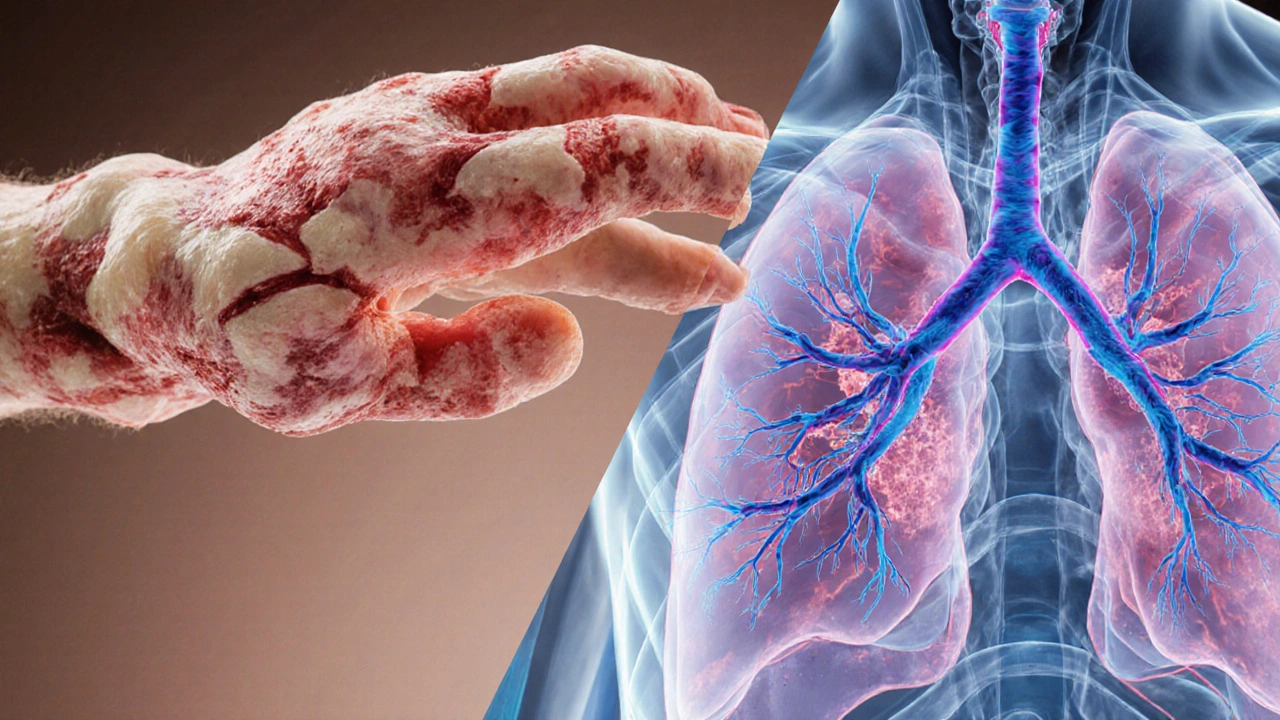PAH and RA Connection: Understanding the Link Between Pulmonary Arterial Hypertension and Rheumatoid Arthritis
When we talk about PAH and RA connection, the relationship between pulmonary arterial hypertension and rheumatoid arthritis, two seemingly different diseases that often share underlying mechanisms. Also known as the PAH‑RA link, this connection matters because it can change how doctors spot and treat patients early. It sits at the crossroads of heart‑lung health and joint inflammation, so getting a grip on it helps you see the bigger health picture.
First, let’s break down Pulmonary arterial hypertension, a progressive rise in blood pressure within the arteries that carry blood from the heart to the lungs. It’s not just high blood pressure; it’s a disease that narrows tiny vessels, strains the right side of the heart, and can lead to heart failure if unchecked. Key traits include shortness of breath, fatigue, and a tendency to develop fluid buildup around the lungs.
Next up is Rheumatoid arthritis, an autoimmune disorder that attacks joint linings, causing pain, swelling, and eventually joint damage. RA doesn’t stay in the joints – it can flare up in the lungs, heart, and blood vessels. About 30% of RA patients report extra‑articular symptoms, and those systemic signs are what bridge the gap to PAH.
One of the biggest bridges is systemic inflammation, the body‑wide immune response that releases cytokines and other messengers. In RA, the immune system goes rogue, flooding the bloodstream with inflammatory proteins. Those same proteins can damage the lining of pulmonary arteries, making the vessels stiff and prone to narrowing – a direct pathway to PAH.
Another key player is vascular remodeling, the process where blood‑vessel walls change shape and thickness in response to chronic injury. In PAH, smooth‑muscle cells proliferate and collagen builds up, narrowing the vessel lumen. RA‑driven inflammation supplies the stimulus for this remodeling, meaning the two diseases often feed each other’s progression.
Clinically, this overlap means doctors should keep an eye out for breathing problems in RA patients, even if the joint issues dominate the conversation. Simple tests like echocardiograms or lung function measurements can catch early signs of PAH before symptoms become severe. Early detection is a game‑changer because targeted PAH therapies can slow down heart strain and improve quality of life.
Treatment strategies also start to overlap. Medications that tame inflammation—like methotrexate or biologics targeting TNF‑α—may indirectly ease pressure on the lungs. Conversely, PAH‑specific drugs such as endothelin‑receptor antagonists or phosphodiesterase‑5 inhibitors can help manage right‑heart stress, which in turn may reduce systemic inflammation levels.
Research is buzzing around the PAH‑RA link. New studies are mapping the exact cytokine signatures that trigger vascular remodeling, while clinical trials test whether blending RA biologics with PAH drugs offers better outcomes. Keeping up with these advances can give patients and clinicians a roadmap for personalized care.
Below you’ll find a curated list of articles that dive deeper into each of these topics—from the biology of systemic inflammation to practical screening tips and the latest treatment options. Whether you’re a patient, a caregiver, or a health professional, the posts ahead will give you clear, actionable insights into the PAH and RA connection and how to manage it effectively.

